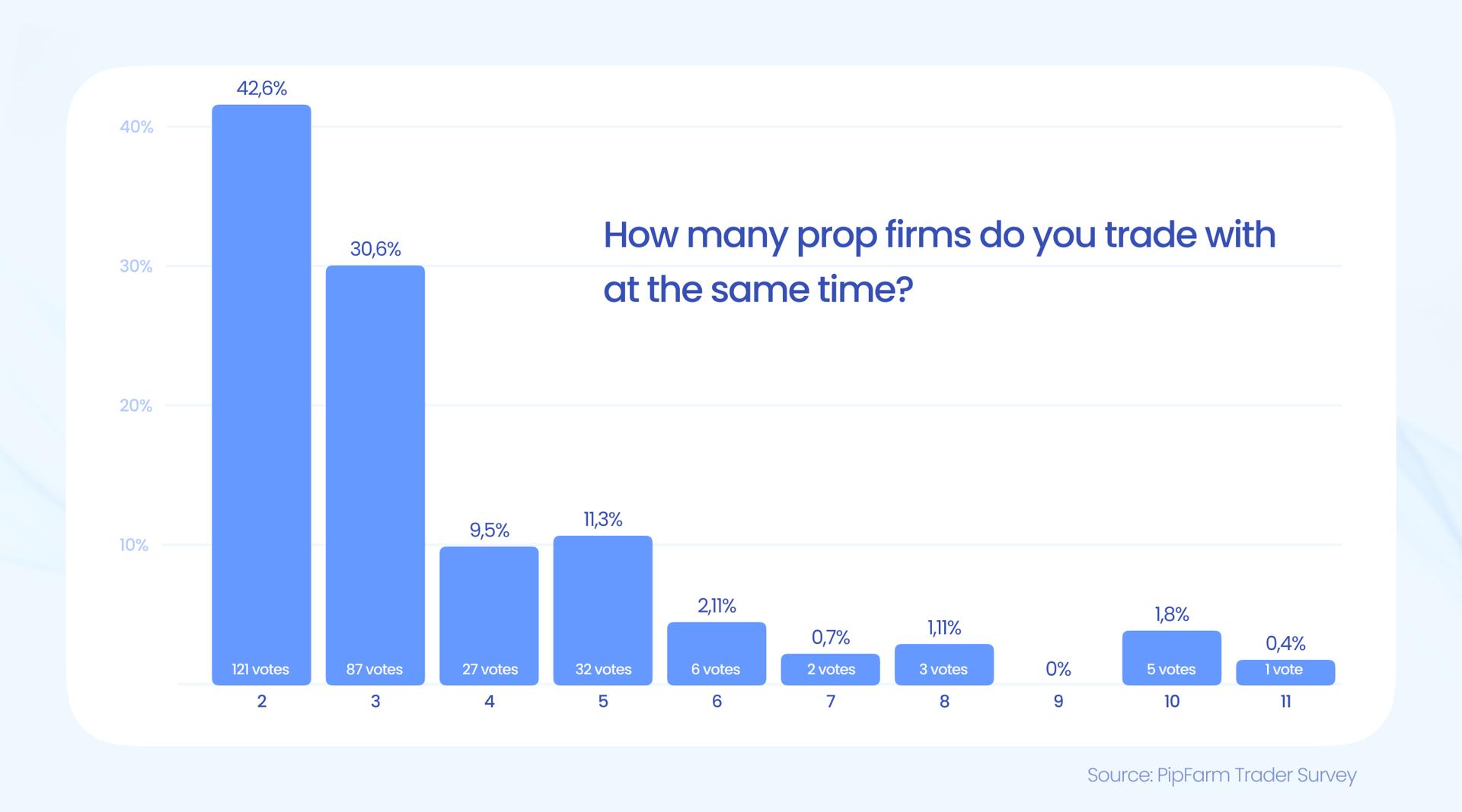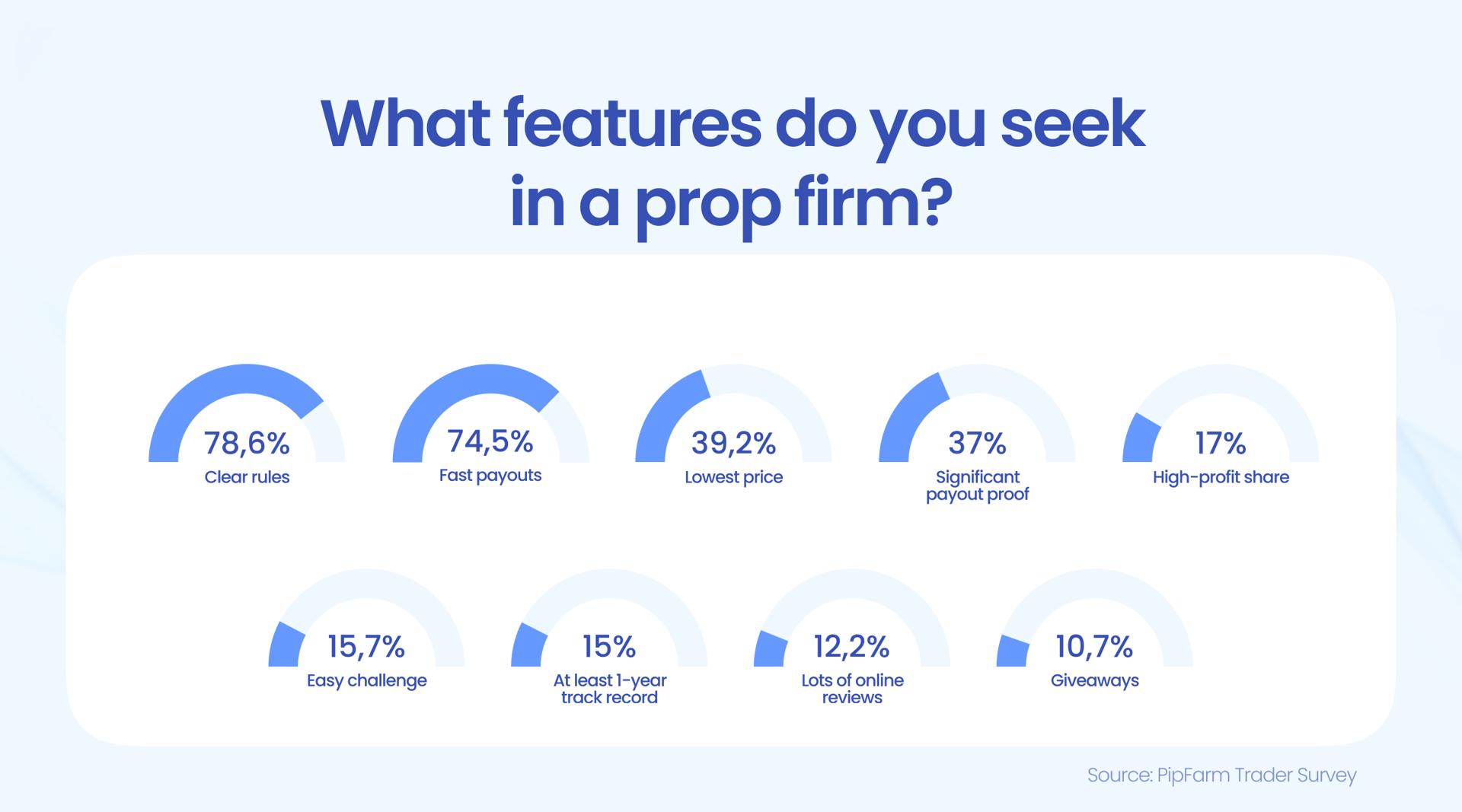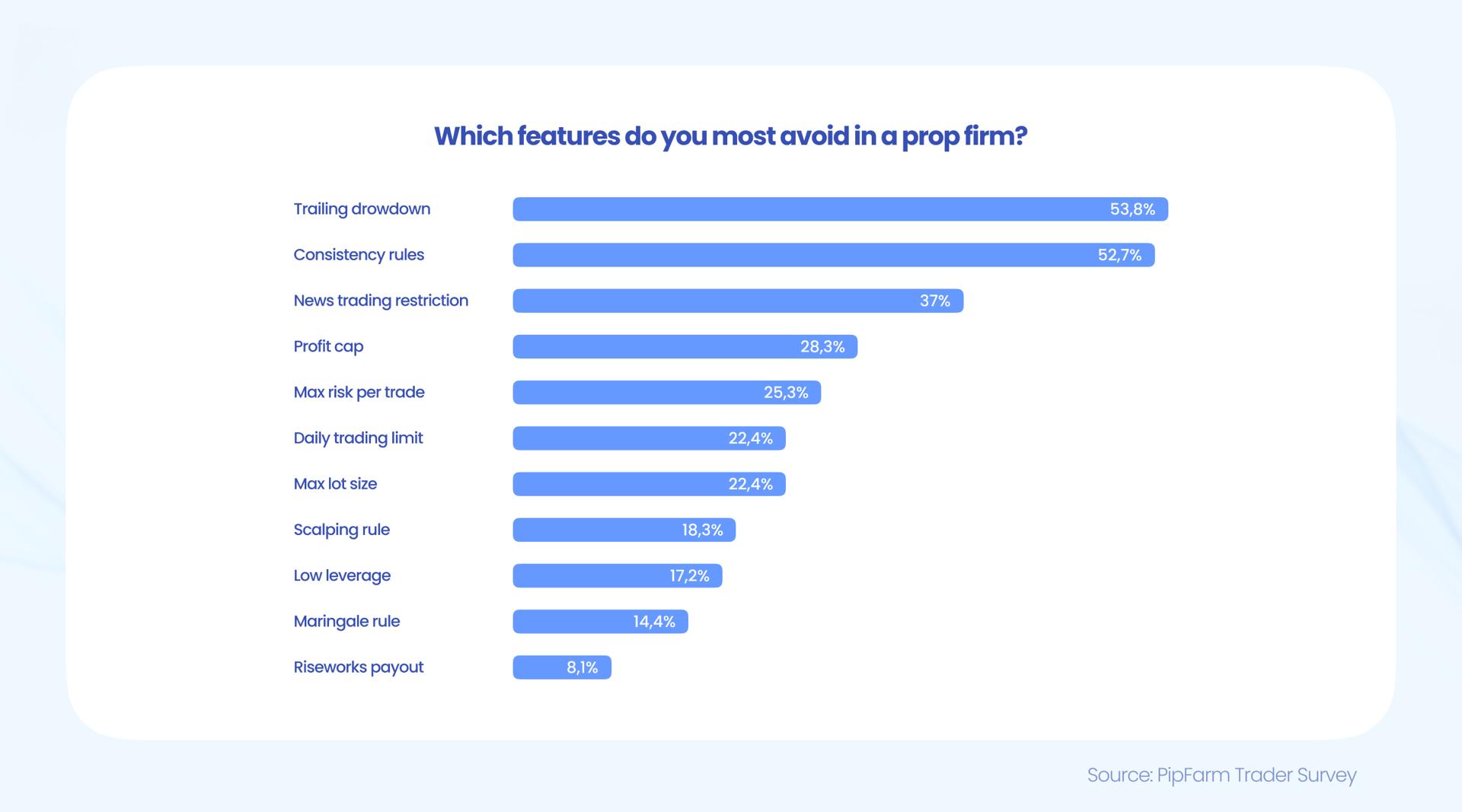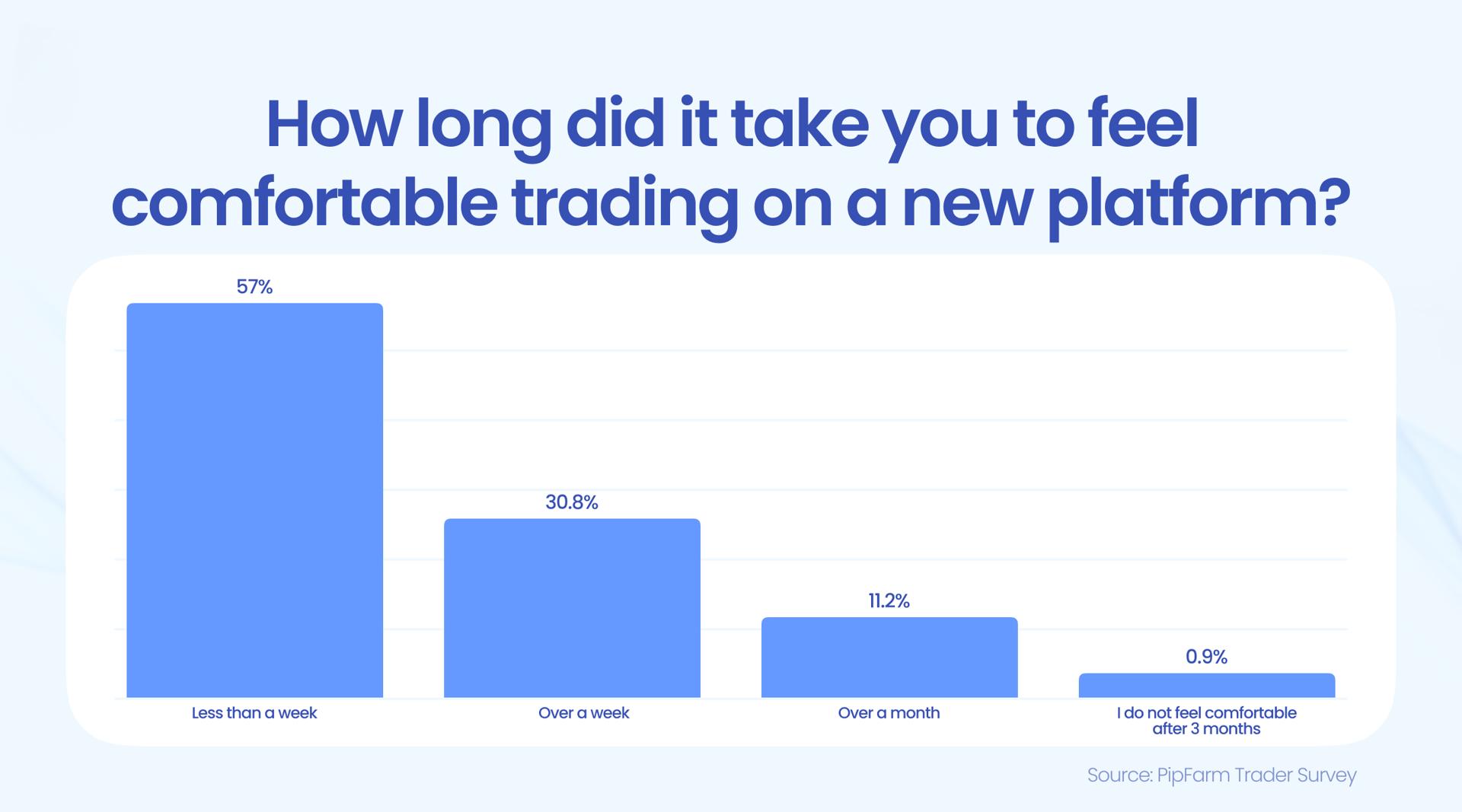In the high-stakes world of financial markets, proprietary trading has been surging in popularity. However, this arena remains a challenging landscape where success eludes many. A recent PipFarm poll, exclusively obtained by Finance Magnates, sheds light on the current state of prop trading. The study, which gathered insights from 459 respondents, reveals a striking contrast: while the industry attracts many, only 40% manage to turn a nice dime.
The Journey Begins with FX and Crypto, Not Evaluation Firms
Finance Magnates gained exclusive insight into a recent poll conducted among PipFarm clients, which shed light on the trading experiences and profiles of those actively using prop firm offerings.
The poll showed that the vast majority of retail traders (70%) start their market journey either with FX/CFD (51%) or cryptocurrencies (19%). Only one in nine people (14%) entered the markets through evaluation firms, while others indicated stocks, futures, or other instruments as their debut venue.

“FX and crypto have been prominent alternative investments for many years and are heavily marketed to retail traders. Unsurprisingly, most traders were introduced to trading through FX and crypto platforms,” James Glyde, the Founder and CEO of PipFarm commented for Finance Magnates.
Nearly half of the respondents (45%) use both their own funds and funded accounts for trading. Only 14% indicated that they rely entirely on their own funds. But this should not be surprising, as the poll was conducted among clients of a company whose main goal is to fund traders.

In a recent interview with Finance Magnates at the iFX EXPO International 2024, Glyde also revealed that “the risk is incredibly hard to manage in the prop trading industry.” The full conversation is available in the video below:
Meet the Profile of an Average Prop Firm Trader
The data collected by PipFarm clearly shows that the average prop firm client tries to maximize their chances of success in challenges and evaluations by using the services of more than one firm (68%). However, it turns out that most limit themselves to two (43%) or a maximum of three (31%). A few record holders indicated cooperation with 6–11 props (6%).
The most important factors motivating retail traders to choose a particular proprietary trading firm are clear operating rules (79%), meaning transparent regulations and simple requirements for participating in challenges. Very important factors are also fast fund withdrawals (75%).

“Contrary to the recent prop firm price war, traders really want clear rules rather than low prices and high-profit shares,” explained Glyde. “Many firms have started rejecting payouts due to technicalities, such as IP address inconsistencies, KYC discrepancies, vague definitions of gambling, news trading, and consistency targets.”

39% of respondents look for attractive prices (cheap challenges and low spreads) in prop firms and evidence of past payouts to other clients (37%). Less important were factors such as high-profit share, ease of challenges, or the length of the firm's market presence.
What do investors want to avoid? Most are discouraged by trailing drawdown (54%), consistency rules (53%), or the prohibition of trading based on the latest news and macroeconomic data (37%) in prop firm offerings.
For a large number of respondents (ranging from 22% to 28%), negative factors also include profit cap, transaction risk limitation, daily trading limits, and too low maximum lot sizes. Less important are low leverage , slippage rules, or martingale.

The poll also showed that prop traders easily adapt to changes. 57% stated that in case of a platform change, they need less than a week to get used to it, and another 31% indicated that a maximum of a month is enough for them.

“This survey highlights that most traders could adapt and switch platforms in less than a week,” added Glyde. “While some traders remain passionate about MetaTrader, its absence will not stop them from trading, and many are learning that other better platforms were available all along.”
Over $4,000 Spent on Challenges
From the data seen by Finance Magnates, it also appears that the average trader invests $4,270 in prop firm challenges, hoping for a high return on their investment. However, nearly half of investors never realize any payout, and almost 60% of all clients lose capital.
The number of profitable prop traders reaches 41%, and among them, prop trading indeed becomes a high-risk but high-reward game. PipFarm data shows that respondents collectively invested $1.9 million in challenges, ultimately earning $7.6 million, which translates to a total return rate of 300%.
The poll was conducted on a group of about 500 active clients of PipFarm, a trader-funded firm that offers proprietary trading on accounts ranging from $5,000 to $200,000.






















